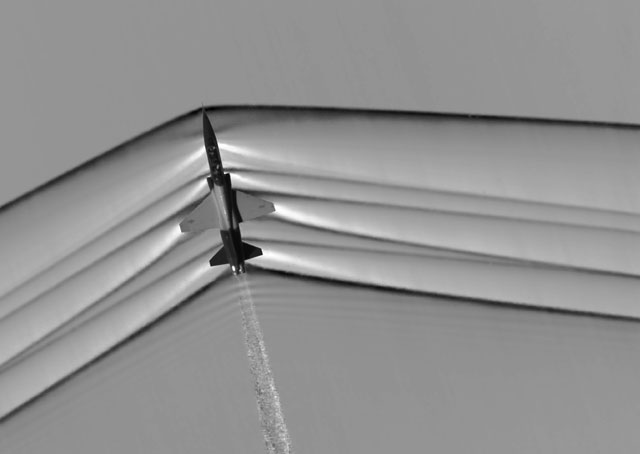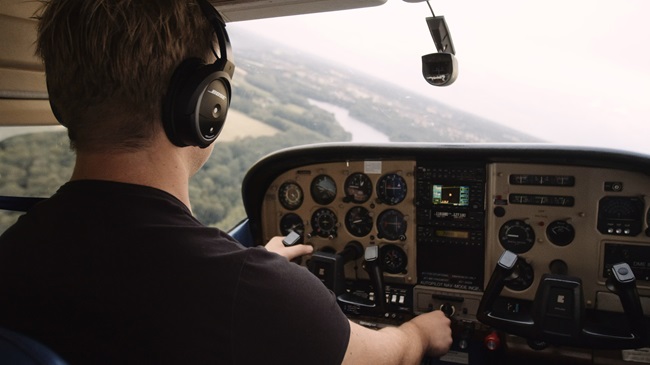Additional Resources
- Engine and Propeller
- Pneumatic Systems
- Transitioning to Other Airplanes
- Transitioning to High-Performance Aircraft

NASA has been making noise over the Mojave Desert, capturing images that reveal a sonic boom using a 150-year-old technique to document the pressure waves that have held supersonic civilian aviation in check for decades.
Scientists from two NASA centers have spent five years refining the reboot of a photographic technique that dates to 1864, invented by German physicist August Toepler. Known as schlieren imaging, the technique reveals the shock waves created by an aircraft moving faster than sound. NASA has adapted the original process to tackle the challenge of photographing sonic shockwaves in the real world at full scale, creating dramatic images that illustrate the principal challenge of returning civilians to supersonic speeds not reached since the Concorde retired in 2003.
NASA used a King Air as the camera platform for this challenging air-to-air photography mission, conducting a series of flights over the desert that required some high-precision flying. Weeks of planning went into the missions, with a T-38C from the U.S. Air Force Test Pilot School (and a NASA F-15) serving as supersonic subjects. Flight paths had to be carefully synchronized so the King Air could capture the much faster aircraft with sufficient precision that the background could be removed and foreground images combined to reveal changes in air density and pressure that a supersonic aircraft creates.
“Safely coordinating two very dissimilar aircraft, operating in close proximity and with a rapid closure rate required a total team effort between NASA, the 412th Test Wing, and TPS,” said Air Force Maj. Jonathan Orso, in a NASA news release.
The NASA research has created a tool that will allow engineers and aircraft designers to fine tune airframes to minimize, though not eliminate, the sonic boom created by a passing supersonic aircraft that can break windows and prompt complaints. Corporations large and small are working on designs that mitigate the problem that prompted 38,000 damage claims against the Air Force between 1956 and 1968 (the FAA banned supersonic flight over land in 1971, contributing to the Concorde’s demise).
NASA's Commercial Supersonic Technology Project focuses on boom reduction; private companies are pressing ahead with aircraft designs that could come to market as early as 2018 if the most optimistic projections are realized.

Nevada-based Aerion Corp. opened the order book in May for the AS2 aircraft, a supersonic business jet priced at $120 million (in 2015 dollars). The company is working with Airbus Group (a collaboration announced in 2014) to refine the design.
“We’ve made substantial progress in defining the AS2 from the inside and the outside," said Aerion CEO Doug Nichols in the May announcement. “It clearly is the shape of things to come and the next great advance in civil aviation.”
Aerion hopes to begin test flights in 2019, and Boston-based Spike Aerospace has a similarly ambitious target of certifying its S-512 in the early 2020s, a timetable that has been pushed back a bit since the project was announced.
The two firms are not alone in the race to be first to a market that is expected to support 600 aircraft sales. HyperMach Aerospace LTD has been working for years to develop a Mach 4 business jet dubbed SonicStar, which aims to achieve dazzling speed in near silence.
When will you be able to hop aboard a comfy bizjet and get from New York at daybreak to London in time for breakfast? Don’t hold your breath just yet.




